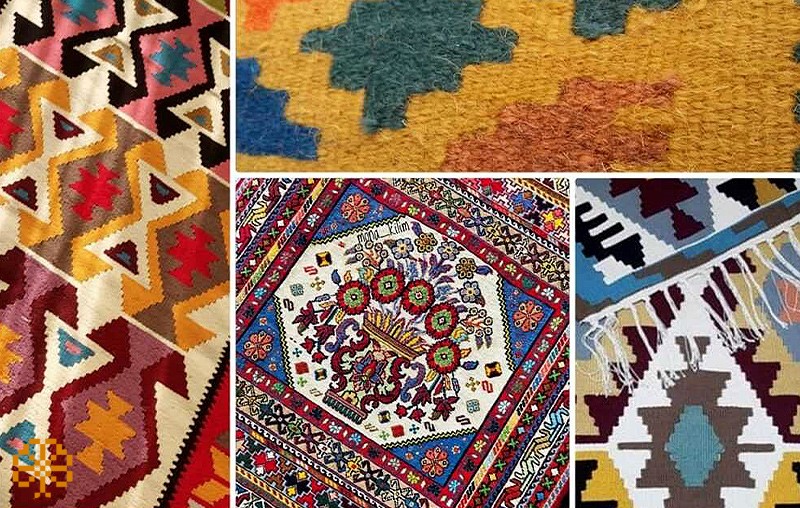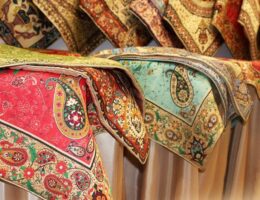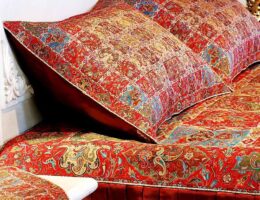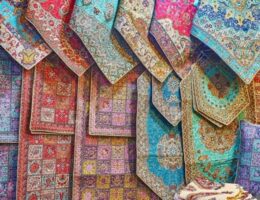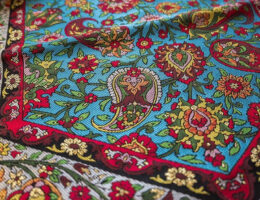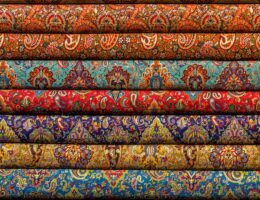IRAN ART EXHIBITION: ALL TYPES OF KILIM AND ITS HISTORIC GROWTH IN ARDABIL CITY
Knowing the types of handmade kilims and knowing them can guide you a lot when buying. A kilim is a relatively simple weave that is used as a rug in many areas. The material of kilims generally consists of two animal raw materials; Goat hair and fleece.
All kinds of handmade kilims
The art of kilim weaving can be considered as one of the most original Iranian arts, and by looking at it, you can clearly see a manifestation of art and elegance while being simple.
In general, kilim is a kind of handmade that, unlike carpets, has no fluff and its texture is more common among nomadic and rural people.
Rugs are rooted in the history of the area in which they are woven, so their designs and colors vary greatly depending on the subject.
To identify the types of handmade kilims, you should pay attention to the issue on what basis and what characteristics you intend to categorize them? In this article we have tried based on three characteristics; Categorize their dimensions, type of texture and texture area for you and examine different models for you.
Types of kilims in terms of texture type
Based on the method and tools used for their weaving, different types of handmade kilims can be divided into 3 main categories:
1. Plain or flat kilim
This type of kilim, which is also known as double-sided and simple, is woven in a simple style, as their name suggests, so that the two sides of the kilim are exactly the same, and both sides of the kilim can be used. .
This type of kilim is less thick than other models and is the most common option among all types of handmade kilims. Qashqai, Saneh and Bijar lemons in Kurdistan, Musnad and simple carpets of Ardabil, Semnan and Zanjan are in this group.
2. One-sided kilim or varnish
This type of kilim, also known as somak, is less thick than the previous option, has a woven fabric texture, and has a Caucasian origin, and has been woven for a long time in Iran and Turkey.
The first weavers of this type of kilims were nomads and as you should have guessed, it should be more popular in the Turkish-speaking regions of Iran. Varni is in fact one of the types of kilims in Ardabil and East Azarbaijan provinces, which has geometric patterns, animals and simple motifs.
3. Embossed or fluffy kilim
Among the types of handmade kilims, this type is the most similar to handmade carpets and it is done in such a way that it is tied to the rug from the map and at the end, the piles or the extra creams are removed.
Of course, it is necessary to mention that in this type of kilims, the background is designed in a simple way and various designs and drawings are not used much like carpets.
Types of kilims in terms of dimensions and size
Kilims are generally smaller in size than the size of handmade carpets and are larger than rugs. If we want to determine the types of handmade kilims based on size, we must say:
1. A small rug that is woven with an average size of 65 x 95 cm.
2. The kilim has an average size of 110 x 165 cm.
3. Middle kilim, the size of which is about 150 x 250 cm.
4. The average kilim is 280 cm long and 70 cm wide on average.
5. Long kilim that is more than 400 x 200 cm.
Types of handmade kilims in terms of area and region
IRAN ART EXHIBITION: This type of division can be said to be the main and best option, because as we said, depending on the area in which the kilim is woven, each kilim has its own specifications and features, and you need to know how to buy a good kilim. Get acquainted with each of them.
1. Qashqai kilim (the most famous kilim in Iran)
Among the types of handmade kilims, Qashqai kilim can definitely be introduced as one of the most famous options, and the reason for this fame can also be introduced in the variety of designs and colors.
In fact, these kilims are woven either when the tribe dies or when they migrate, and the scenery around the weaver has a high variety and beauty, which makes the woven design have a special result.
Unique geometric designs, wool delicacy, brightness of colors, the use of animal designs such as goats and peacocks are the most important and characteristics of Qashqai kilims.
2. Shahsoni kilim (the most delicate kilim)
From the point of view of fame, perhaps the only option that can compete with the Qashqai kilim is the Shahsoni kilim. The texture of kilims in the Shahsoon tribe, which is one of the largest tribes in Iran, is so high that the kilims woven by them alone are divided into a separate category.
If you remember, in the first part, we introduced a group of kilims called Verni; This is exactly the kilim woven in this Shahsoon; Very delicate kilims that mostly have animal designs such as deer, horses and birds and are woven with coarse and dry wool.
Another feature that is evident in Shah Soon kilims is the use of large and embossed patterns that are used in a row in the design.
3. Glim Hersin
Among the types of handmade kilims that we have studied so far, it can be said that Hersin kilim has the most flexibility and its weavers weave many designs and designs depending on their taste and imagination.
Hersin, which is one of the regions of Kermanshah province, is one of the main centers of Iranian kilim weaving. The colors used in the kilims of this region are mostly gray, green, white, red, purple and more recently magenta.
Another prominent feature of Hersin kilim is that it is full of borders and backgrounds with a wide variety of designs, so much so that you can rarely find empty space in it.
4. Baluch kilim
It is interesting to know that the people of this region, due to the environmental and climatic conditions, have always tried to show the desire for water resources and pastures in their projects. That is why Baluch kilims can be full of striped designs.
In general, handicrafts with brown, liver, dark red, camel and dark blue colors can be seen in these areas, which are combined with happy colors such as green, yellow and red.
5. Khamseh or Fars kilim
In Fars province, Qashqai kilim has the largest volume of weaving and production, but other kilims are also woven in this region, the most famous of which is Khamseh kilim, which is derived from the names of five Shirazi tribes that have been mixed together.
It is interesting to know that among these five nations; There are two ethnic groups of Arabic, two ethnic groups of Turks and one ethnic group of Persians. In this province, among the types of carpets, only horizontal and metal samples are used, and the type of kilim that is woven is somaki or the same as varnish.
In Khamseh kilim, the use of beautiful colors is the first letter; Also, the background of the design that is woven is more dark and on it, stars are woven diagonally in the shape of interwoven rhombuses.
Other types of handmade kilims
Because the number of woven kilims in Iran has a variety and different types, in the following, we will introduce them to you only briefly:
Larry kilim: Among the types of handmade kilims, this kilim can be introduced as one of the highest quality options, which is mostly used for storing equipment and pouch weaving.
Zarand kilim: This kilim is also woven in a slit by the Turkic tribes of Shahsoon, which is basically a long, narrow and at the same time strong size.
Saneh kilim: This kilim is special for Sanandaj city and has a special elegance and the use of plant designs, lines and diagonals is very common in it.
Kurdistan kilim: The colors include bold red, light pink, dirty pink and bold green, and twisted woolen yarn is used for its texture.
Turkmen kilims: These kilims are strong and light, and the designs are categorized based on an original pattern called a flower.
IRAN ART EXHIBITION: The city of Ardabil (also called Ardebil. It’s ancient name was Artavil) is the capital of Ardabil Province in northeastern Iran with an area of 18,011 square kilo meters,
bordering on the (former Soviet) Republic of Azarbaijan to the north and north east, Guilan province to the east and south east, East Azarbaijan to the west, Zanjan province to the south, a little inland from the shores of the Caspian Sea, and 588 km to the northwest of Tehran, Ardabil can be reached both by the road and air. It is
located in an altitude of 1,300 m above sea level and is 210-km northwest of Bandar-e Anzali and 70 km from Astara on good asphalt, twisting Scenic Mountain road. The town is a market center for a fertile agricultural region; hand made carpets and kilims (gilim) are being produced there. Other towns of the province of Ardabil are Bileh Souar, Germi, Khalkhal, Meshkin Shahr, and Pars Abad. The province has a population of 1,165,025 deeply religious inhabitants. Because of being situated at the foothills of Mount Sabalan, 4, 860 meters above sea level, the town has a pleasant weather in different seasons, thus attracting huge number of visiting guests from all parts of Iran. Ardabil was probably founded in the 5th century AD. It became (10th century) the capital of Azarbaijan, but was soon superseded by Tabriz. In 1220 AD it was destroyed by the Mongols. Ardabil is best known as the birthplace of the eminent religious leader Sheik Safi od-Din (1251-1334) from whom the Safavid dynasty was descended. Sheikh Safi was the founder of a sufi order and monastery in Ardabil, the prime mover of Iranian culture during the 15-16th century and the center of the theocratic community of Dervish Brotherhood. Dervishes, after coming together under the same organizational structure, managed to attract and retain the attention of large masses in the towns and in the country. Ismail, a descendent of Sheikh Safi and who was later crowned as the Shah of Persia in Tabriz (1501), was himself a member of this order. The main objectives of Dervish Brotherhood were the elimination of the then rampant anarchy and the reorganization of a new state that could respond to the demands of the urban and the rural disinherited of Iran and satisfy the people’s thirst for justice. Shi’ism began to spread through mosques, monasteries and Dervish centers, and very soon conquered the masses. Shah Ismail created an immense empire: he succeeded in subjecting the many principalities that had formed after the fall of Timurid state. In 1510 he defeated the Khan and conquered Baghdad. The decision to uphold Shi’ism might be interpreted as an extreme endeavor to prevent the Iranian nation from becoming absorbed by the west (Ottomans) and the east (Uzbeks). The town was occupied by the Turks in 1725 and the Russians in 1828. Its proficient library was taken to St. Petersburg by the Russians.
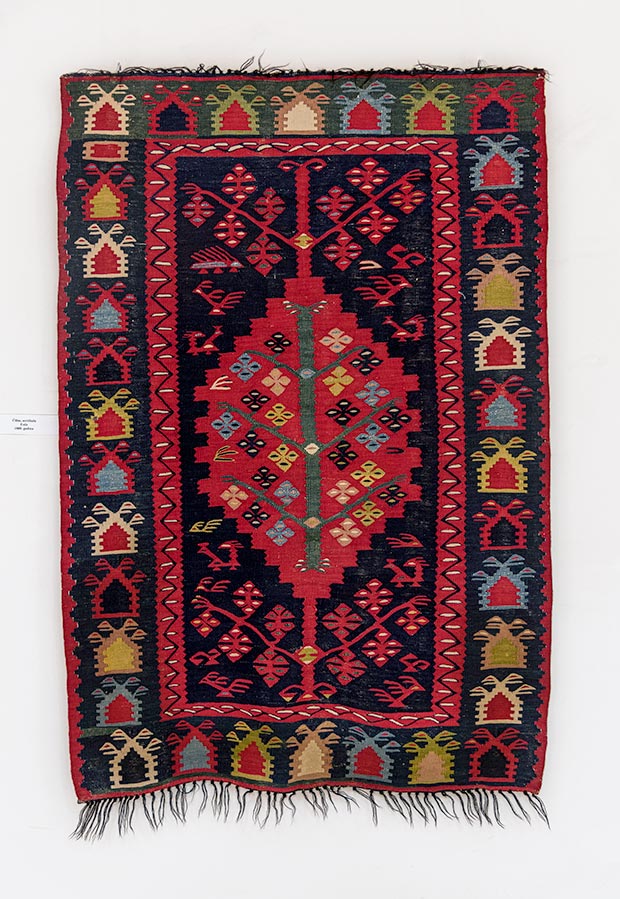
Mausoleum of Sheikh Safi
Sheik Safi’s 14th –century tomb in the center of the city of Ardabil often enlarged and restored in later centuries, can still be visited. It houses the mortal remains of Shah Ismail as well as his saintly ancestor, who is reputed to have foretold the future, spoken to the dead and rescued those in danger at sea. The tombs are
surrounded by finely engraved wood panels with extraordinarily delicate ivory and precious metal inlays. The complex of structures known, at present, as Sheikh Safi’s Mausoleum, consists of a portal, a porch, Sheikh Safi’s tomb-chamber, the Chini Khaneh (china hall), the Shahidgah (martyrdom site), the Khaneghah (dervish monastery), Qandil Khaneh (lantern hall), the Jannat Sara (heaven) Mosque, and others, and ranks among the finest historical achievement of Iranian art. The burial place of Sheikh Safi od-Din Ardabili as well as other Safavid kings, suchas Shah Ismail, comprises the tombs of a number of princes, notables and generals
of the Safavid period, including the tomb attributed to Shah Ismail’s mother, and those of Sheikh Sadr of-Din, Sheikh Junaid, Sultan Heidar and two generals, namely Sultan Ustajilu and Kurd Beig, the latter’s tombstone bearing the 1542 AD date. Apart from the above structures, the construction of the main portal of the
mausoleum and three domes decorated with exquisite faience tile and inscriptions in the Kuffic and Riqa’ scripts, give considerable charm and splendor to this attractive historical monument. The decorative elements of the complex, both internal and external, consist of paintings, plaster moldings, stuccos and gold-toned stalactite decorations. The structure of the Qandil Khaneh stands out among the rest both from the architectural as well as the plaster points of view. Sheikh Safi’s tomb-chamber is a cylindrical tower capped with a rather low dome, underneath which an exquisite carved box bearing an inscription in Riqa’ script covers the actual burial ground. The box is one of the finest movable treasure pieces of the mausoleum. The dome of Sheikh Ismail’s tomb-chamber is lower than that of Sheikh Safi, and is decorated on the outside with colorful tiles and an inscription in Kuffic. Under the dome in the chamber a fine, costly box rests upon the tomb.
IRAN ART EXHIBITION: The shrine on Sheikh Junaid’s tomb together with three other boxes in the complex, are highly attractive on account of their superb carvings. There is a large vaulted hall next to the mausoleum wherein Shah Abbas the Great stored the collection of jade and porcelain given to him by the Emperor of China. Each object was placed in a gold-plated niche cut to size. The gold has worn off and most of the objects (except about a dozen dishes and receptacles) are now in Tehran museums. The oldest part of the complex belongs to the 15th century AD, the other parts having been gradually added, particularly under Shah Tahmasp I and Shah Abbas II, who spared no efforts to expand, beautify and repair the Safavid Kings’ eternal resting place. The most famous of Persian carpets, the so-called “Ardabil Carpet” (one of a pair) in the Victorian and Albert Museum, was presented to the mausoleum by Shah Tahmasp in 1539. It was actually made in Kashan.
Ardabil Museum
Originally called Chini Khaneh (Porcelain House), and part of Sheikh Safi Complex, it was inaugurated as a museum affiliated with the complex in early 1991. The
architectural style of the edifice resembles that of Ali Qapu in Isfahan. It is an octagonal, domed room with four Shah Neshins ( elevated recesses). The stalactite works in this structure are considered as fine specimens of the constructional and decorative devices of the Safavid period. The Chini Khaneh, with its beautiful plaster work, is one of the most artistic and valuable parts of the complex, which is also notable for a number of fine and expensive wooden and silver doors.
Varni Kilims
Varni, a flat weave and Kilim (gilim), a kind of rug and floor covering without pile and very decorative which is produced in the province of Ardabil is famous in the world. The designs are based on the motives of the surrounding environment mostly birds and animals depicted from the top of the head of the talented weavers of the region, all of whom are patient ladies who learn to weave varni from their mothers. Many of the varnies are made with silk. They are completely made of natural silk or partly silk, so called “Kaf Abrisham”, meaning with silk background. The designs are divided into frames and small cubes (squares) or rectangles in which the motives of the birds and animals are woven. Based on a report put out by the Iran Handicrafts Organization, Ardabil Branch, there are 2,500 workshops in the province with 2,000 weavers along with 13,000 independent weavers which work in their homes and make 20,000 square meters (more than 210,000 square feet) of varni per year. The local market price for the whole production amounts to $1,000.000.
